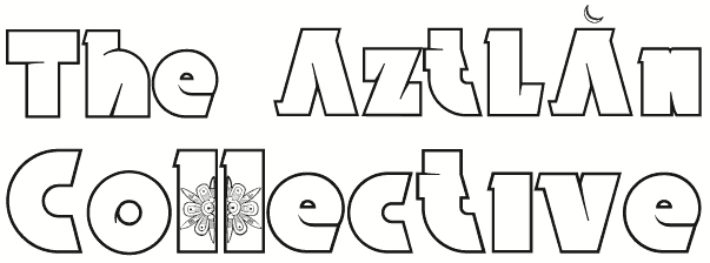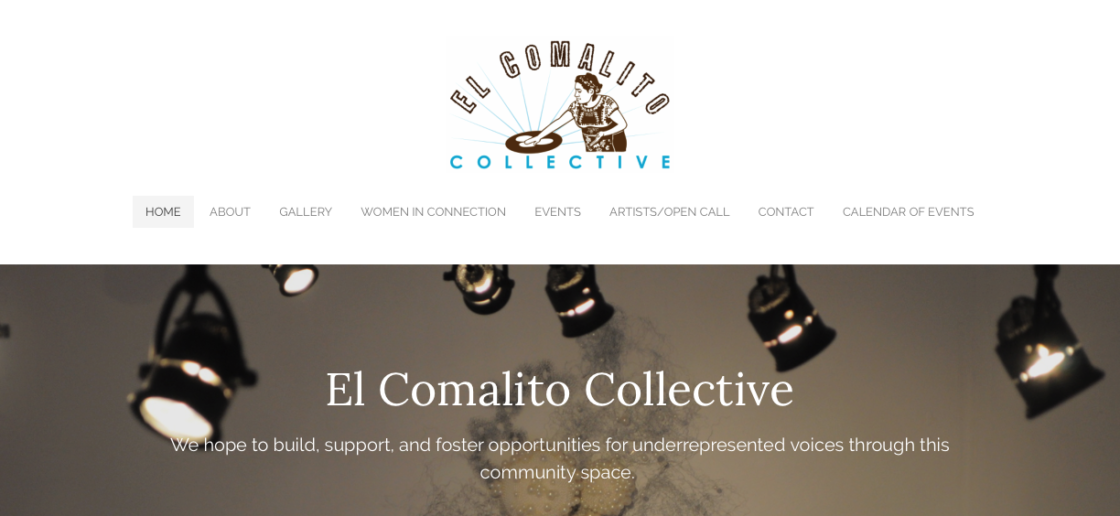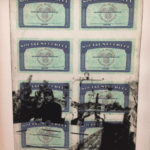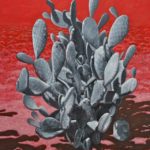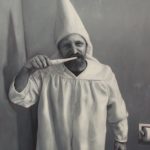
Abel Rodriguez was born in Fairfield, CA. He studied art in the prestigious Yale art program after obtaining a BFA from California State University, Long Beach focused on drawing, painting, and graphic design. His partner in love and life, Edgar-Arturo Camacho-Gonzalez is an actor, activist, and artist born in Jalisco, Mexico. Edgar-Arturo writes poetry and paints, influenced by his work in the community as a counselor for substance use and mental health. He is also committed to women’s health initiatives and is working for Planned Parenthood. Based in Vallejo, CA they have witnessed their neighborhood starting to change and it was important for them to establish a venue to display art and activities that represent their communities as queer people of color.
In December 2015, El Comalito Collective opened its doors with a mission “to showcase underrepresented artists.” While working full-time jobs they run the gallery’s robust schedule. In 2016 alone they hosted 37 artists in exhibitions and events that explored issues of identity and immigration through a de-colonial lens. Edgar-Arturo explains, “we are also committed to providing programming through art for our communities in the form of classes, workshops, therapeutic art sessions, and any other community proposal.”
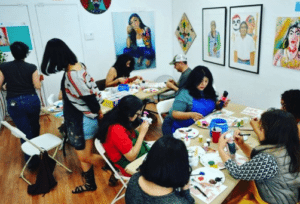
The art exhibited varies but always strives to reflect their communities. Edgar-Arturo clarifies, “for Day of the Dead we make papier-mâché Catrinas” accompanied by a lively discussion lead by myself and other collective members, Claudette Ramirez, Lisseth Ramirez, and Diana Hernandez about the cultural significance of La Catrina and papier-mâché. In addition, Ramona Garcia, a visual artist interested in art therapy, also introduced the art of artesanos and facilitated papier-mâché storytelling. “Our goal is to have our participants have fun and learn about cultura at the same time.”

The community response has been mixed. “We have been told that we are perpetuating reverse racism and discrimination for not showing white affluent artists who have access to other spaces,” explained Abel, but overall, their efforts have been well-received. Their decision to create such a space in Vallejo was solidified when they were asked to participate in an el Dia de los Muertos exhibition and found they were the only two people contributing work who had a direct association to the holiday. “We exhibited alongside mostly white folks who were culturally appropriating the work. We knew we had to do something about it so we decided to open up a space where we would model the bridging of community, arts, and activism through our mission,” Edgar-Arturo recounts.
While they may be the only gallery in town focused on underrepresented artists and ideas, they are situated in a network of a couple dozen art spaces ranging from coffee shops to specialized galleries. They participate in their community’s ‘second Friday’ art walk once a month as well. However, Abel explains, “there is very little political work being exhibited,” and what is being shown tends to feel disconnected from the community so much so that El Comalito Collective feels a responsibility to “show up for our communities,” but also “not contribute to their alienation. The arts are being used as a core part of the process of gentrification.”
Eight months after opening they already had their calendar booked through July 2017. Their shows usually last 4 weeks with openings in the second week of each month. They are always accepting proposals in addition to the open calls posted on their website and social media. El Comalito Collective has been asked to donate the space for events including “healing workshops for women, yoga classes, the screening of social justice based documentaries, plays, spoken word performances, sign making parties for protests, and more.” Edgar Arturo explains that as long as the proposal is aligned with their mission, they usually find a way to make it a reality.

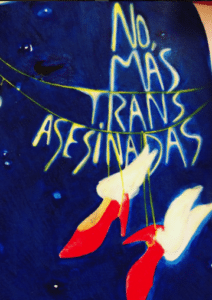
I See You, their January exhibition, was all about visibility. The exhibition sought out to showcase imagery of QTPOC in positive reaffirmations, but also highlight traumas faced by the community at large in an effort of solidarity and demonstrate how these narratives are not isolated. Edgar-Arturo explains, “With the current political climate under the trump administration, the livelihoods of many of our communities are at risk…Through these images, QTPOC will be able to come into this space and see themselves reflected in the work, narratives, and experiences in hope that that can act as a catalyst for healing. I See You is an intentional space for QTPOC healing, affirmation, and acknowledgment that we exist and that when I see you, I see me.” This show and others have included live performances and curatorial/artist talks to address visitor interpretation.
“We knew that A Day in the Life by Izik Sahagun was important to showcase because it addresses (im)migration, the current political climate the trump administration and the effects on both white supremacy and migrant narratives,” Abel explains of their February exhibition. “The artist’s intention was to expose the anti-immigrant sentiments and highlight some of the struggles of immigrant communities.” Sahagun’s “work is comprised of photo realistic oil paintings that invite the viewer into the personal space of white supremacists as well as immigrants. This forces the viewer to analyze comfort and address standpoint. You will also see works that depict Klansman as trump supporters, border crossing narratives, and empowering depictions of resiliency. We are honored and proud to share this work that will be traveling to other shows that we will be curating this year.”
Be sure to join their mailing list to keep up with upcoming events and check their Calendar for the exhibition schedule and hours of operation. Currently on view is Weaving Our Power in Color, the work of A. Paquiliztli and next month is the work of Jonathan Hemelberg in Encuentros en el Bosque.
Edar-Arturo Camacho-Gonzalez and Abel Rodriguez spoke with Diana Ledesma via email February 24, 2017.
Further Reading:
About the author:
Diana Ledesma is an arts professional living in New York City. She obtained her masters from New York University in 2016, completing her thesis on the status of the Mexican American art market.
